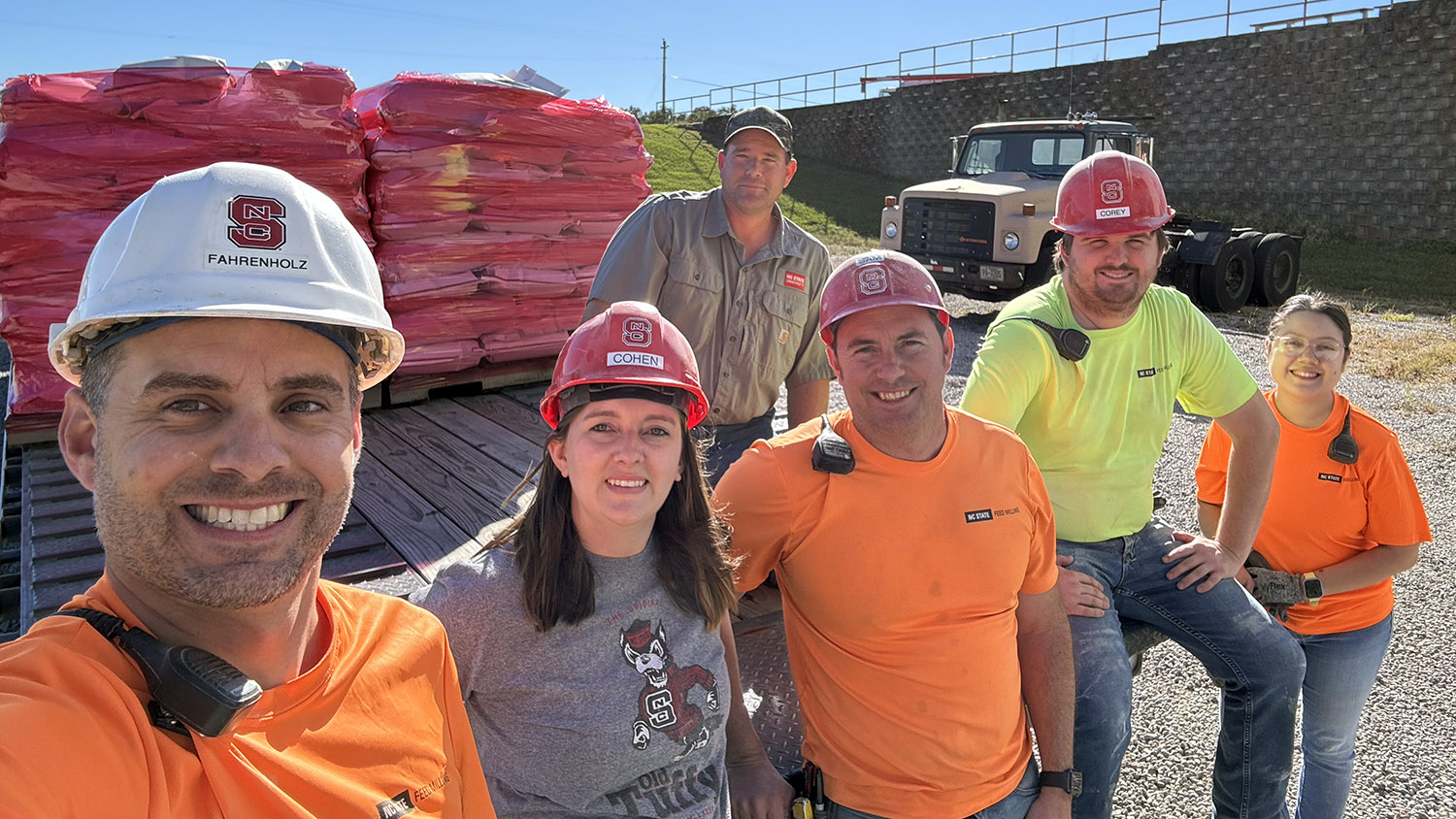Flood-damaged homes need special care to prevent and remove mold
Media contact: Dr. Sarah Kirby, 919-515-9154 or sarah_kirby@ncsu.edu.
Mold can cause health problems, so people who live in homes that were flooded during Hurricane Irene should act quickly and carefully to prevent or remove mold.
North Carolina Cooperative Extension recommends that homeowners follow four steps: Start by removing contaminated mud and debris, then clean, disinfect and dry the home.
Before you begin, make sure your tetanus shots are up to date. Wear goggles along with a wide-brimmed hat, sturdy shoes – steel-toed boots are best – and gloves that will not rip or tear. A respirator is also essential; use only ones that are rated N95 or higher.
Make sure you have adequate ventilation by opening windows and not running the central air system. Always follow manufacturers’ directions with cleaning and disinfecting products. And don’t wear soft contact lenses. Don’t drink, eat or smoke while cleaning, and be sure to wash your hands thoroughly with soap and water when you are through or before you take breaks to drink, eat or smoke.
After you’ve removed sediment and other debris that floodwaters have carried into the home, remove excess water by soaking it up, mopping or using a wet vac. Dr. Sarah Kirby, an associate professor and Extension housing specialist at N.C. State University, recommends removing porous materials such as gypsum, paneling and other wall coverings, flooring and ceiling tiles that have been exposed to floodwaters.
“They need to go because they’ve been able to soak up moisture and can become a breeding ground for mold,” she says.
“Sometimes plaster and wood flooring can be saved, but it just depends. If plaster starts to become removed from the lath, it needs to be removed,” she says. “With wood floors, you will probably need to remove one board to give the wood room to expand.”
Different types of flood-damaged insulation should be treated differently. It might be possible to hose off and salvage rigid polysterene (Styrofoam) insulation. Fiberglass batt and cellulose — loose or blown-in — insulation should be replaced.
Also remove vapor barriers in crawl spaces as well as flexible ductwork that’s been sitting in floodwaters. If you have metal ductwork, it can be saved through thorough cleaning and disinfecting.
When cleaning surfaces, use a non-phosphate cleaner. “This is important because phosphate residue is a food source for mold. Mold likes that,” Kirby adds.
“After you’ve cleaned, get rid of the brushes, sponges and cloths that you’ve used. Then disinfect any hard or nonporous surfaces – for example, hard plastic, concrete, glass, metal and solid countertops – that have been in contact with floodwaters,” Kirby adds.
To disinfect, use chlorine bleach or quaternary ammonium compounds – but do not use them together. Follow the directions. Dilute chlorine bleach by mixing ¾ cup of bleach per gallon of water. Chlorine can be irritating, so wear rubber gloves. And because it can be corrosive, don’t use it on metal surfaces. On materials that may be damaged by bleach, you can use other milder disinfectants such as alcohols, pine oil cleaners of at least 70 percent pine oil, phenolics and hydrogen peroxide.
After you’ve cleaned and disinfected and have the wall cavities open, consider a borate treatment to resist termites, decay and mold. This is recommended but not absolutely necessary, Kirby says.
Air out the building, including the crawl space. Open windows and interior and exterior doors. Window fans can be used to pull mold spores to the outdoors, if you have electricity.
Then dry the building. If you have no power, keep the windows open. But if you have power, close the windows and if it is safe, run the air conditioner or heater and use fans and a dehumidifier, if possible. Wooden studs and other wood materials need to be dried to a moisture content of 15 percent or less before closing up the walls and rebuilding. You can check the level with a moisture meter calibrated by wood type.
“Keep watching to make sure mold doesn’t return, because it can,” she says. “New mold can form in two to three days if materials stay wet. If mold returns, repeat the cleaning and drying process.”
Additional information about mold can be found on the national Extension Disaster Education Network website at http://eden.lsu.edu/Topics/HumanHealth/Mold/Pages/default.aspx. And information about other disaster recovery topics can be found on N.C. Cooperative Extension’s disaster page at http://www.ncdisaster.com/.
Cooperative Extension is an educational partnership of North Carolina State University, North Carolina A&T State University, county governments and the U.S. Department of Agriculture. Cooperative Extension has centers in all 100 North Carolina counties, and its programs focus on agriculture, natural resources, community and rural development, family and consumer sciences and 4-H youth development.
For contact information for your Cooperative Extension county center, see http://www.ces.ncsu.edu/counties.
-Dee Shore, 919-513-3117, 919-604-3164 or dee_shore@ncsu.edu
- Categories:


